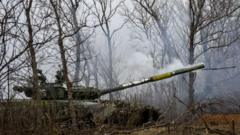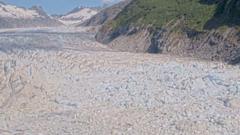About four million common murres, vibrant black-and-white seabirds found off the coast of Alaska, have been wiped out by a series of environmental changes linked to an unprecedented marine heat wave. This alarming report from the journal Science highlights the ecosystem's vulnerability to climate change, marking a critical moment in wildlife conservation efforts.
The mass die-off, which took place between 2015 and 2016, left officials discovering roughly 62,000 corpses of these birds along the coastline, building concern for marine biodiversity. According to Heather Renner, a supervisory wildlife biologist at the Alaska Maritime National Wildlife Refuge and co-author of the study, the gravity of the situation was much more severe than initially understood.
The research reveals that nearly half of the common murre population in Alaska has vanished, representing the most extensive die-off of any single species in documented history. Alaska is known to host approximately 25% of the world’s common murres, emphasizing the significance of these findings.
The marine heat wave, commonly referred to as the Blob, triggered a disastrous chain reaction across the ecosystem, directly affecting marine life ranging from tiny plankton to large mammals like humpback whales. A crucial consequence of the warm water was the significant decline in fish populations, depriving murres of their essential food sources, and contributing to the starvation of these seabirds.
As climate change continues to alter marine environments, the fate of Alaska’s common murres offers a poignant reminder of the urgent need for environmental conservation and awareness.






















